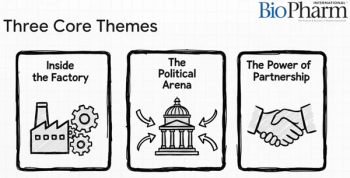
5 Ways mRNA Is Revolutionizing Drug Development Beyond Vaccines
Once limited to experimental vaccine platforms, messenger RNA (mRNA) is now taking center stage across the entire biotech landscape.
COVID-19 vaccines from Pfizer-BioNTech and Moderna showed that mRNA can be deployed at scale and speed. In May 2024, the FDA approved Moderna’s RSV vaccine (mRESVIA) for adults over 60—signaling growing confidence in mRNA’s safety and versatility beyond COVID. That success unlocked massive investment into mRNA as a modular therapeutic platform. Companies likeBioNTech, CureVac, eTheRNA, and Ethris are leading innovation in both immunogenic and non-immunogenic RNA therapies. Major players are forming high-stakes partnerships, including:
- BioNTech + Bristol Myers Squibb: $1.5B deal for next-gen bispecifics
- CureVac + GSK, CRISPR Therapeutics, MD Anderson for cancer vaccines and CRISPR-based therapeutics in select disease areas.
- eTheRNA + Dropshot Therapeutics: $950M deal for cardiac/renal mRNA drugs
With an expected CAGR of 1.2%, the mRNA therapeutics market is forecasted to hit $71.7 billion by 2034.From cancer immunotherapies to CRISPR-based gene editing, here’s how mRNA is driving the next generation of medicine:
1. Emerging mRNA formats
Beyond non-replicating mRNA, newer constructs like self-amplifying mRNAs, or saRNAs, and circular RNAs, or circRNAs, are showing increased durability, reduced immunogenicity, and improved expression. Companies and institutions working on saRNAs include MiNA Therapeutics, Nature’s Toolbox, Virogin Biotech Limited, with Orna Therapeutics, Shanghai CirCode Biomedicine, and multiple university groups among those working on circRNAs.
2. Cancer immunotherapy gets a boost
Companies like BioNTech, CureVac, and eTheRNA are developing multivalent, personalized mRNA cancer vaccines. Some trials combine these with checkpoint inhibitors like PD-1 blockers to enhance tumor-specific T-cell activation.
3. Gene editing powered by mRNA
Intellia Therapeutics’ NTLA-2001 uses an mRNA-LNP system to deliver CRISPR-Cas9 in vivo, demonstrating that mRNA can enable direct, systemic gene editing.
4. Next-gen delivery systems
Lipid nanoparticles were just the start. Innovations now include lipoplexes,polyplexes, andSNaPL (lipidoid nanoparticle for inhalation). These are improving tissue targeting, reducing degradation, and expanding delivery options like nasal sprays and inhalers.
5. Expanding non-immunogenic applications
mRNA is being used for protein replacement therapy, regenerative medicine, and rare disease treatment, such as for hereditary transthyretin amyloidosis.
Bottom line
mRNA has moved far beyond the hype. For those working in biotech R&D, drug discovery, or manufacturing, it's time to think of mRNA not as a product—but as a platform that’s rewriting the rules of medicine.
*The above is a summary of the article “
Newsletter
Stay at the forefront of biopharmaceutical innovation—subscribe to BioPharm International for expert insights on drug development, manufacturing, compliance, and more.




